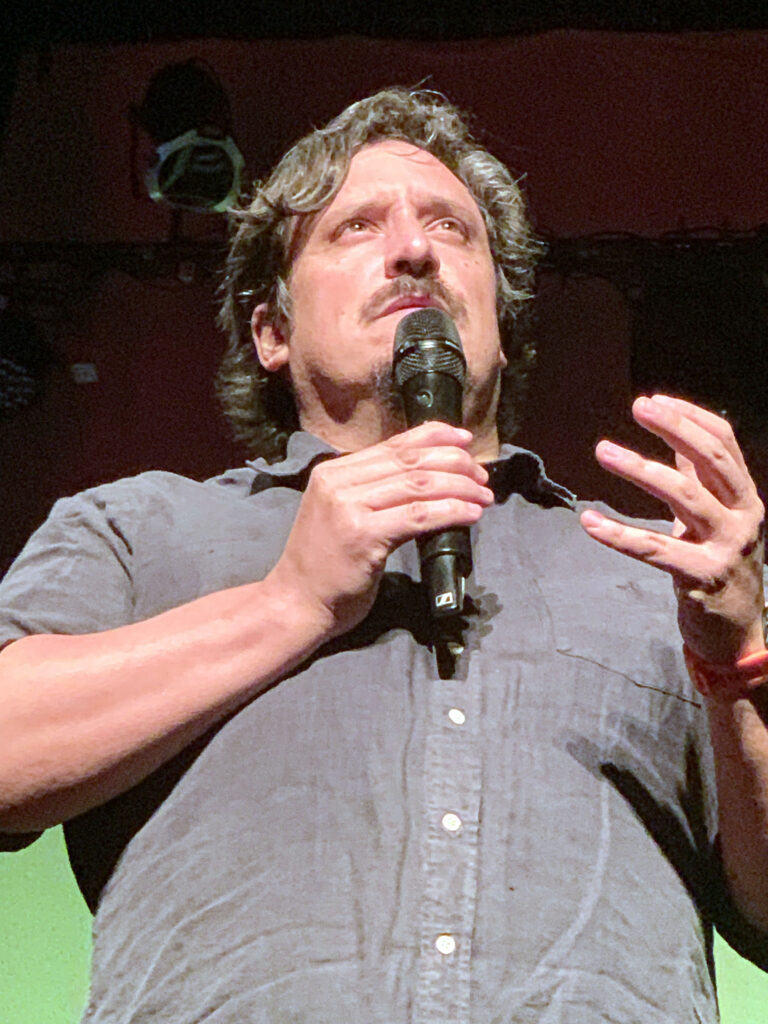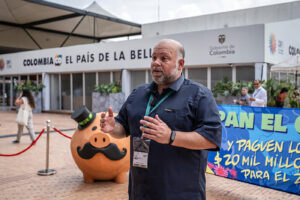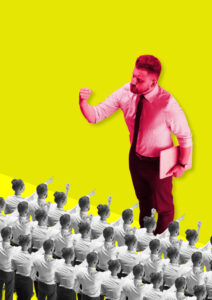The social and technological stack of Matías Asún

Un texto breve que acompaña a la imagen, visible para todos los usuarios. Suele brindar contexto adicional o explicar la relación de la imagen con el contenido.
In the innovation ecosystem, the most disruptive profiles tend to be hybrid. The case of Matías Asún, current campaigns director of Greenpeace Andino (Argentina, Chile, Colombia), is a clear example of this trend.
His impact on environmental activism does not stem from a traditional background in biological sciences, but from the integration of two seemingly unrelated fields: social psychology and digital platform architecture. A psychology graduate from Universidad Diego Portales with postgraduate studies in sociology, his early research and development phase focused on understanding human behavioral systems and collective organization.
His fieldwork in the Lo Prado commune and with the foundation “Trabajo en la Calle” allowed him to test social mobilization theories in real-world environments. This stage was crucial for validating his core hypothesis: large-scale social change is not achieved solely through willpower, but through the proper deployment of tools that facilitate connection and organization.
He realized that the “operating system” of any successful movement is the psychology of its communities—an insight that would become the foundation of his future technological and strategic stack.
Minimum viable product (MVP): The COMUNITARIOS.CL platform
Before applying his model to the environmental field, Asún launched what could be considered his minimum viable product in the social sector: the platform Comunitarios. Inspired by the philosophy of open-source software and copy-left principles, he designed and implemented a digital network for social workers in Chile. This project was more than a job board; it was a platform designed to generate network effects, break down information silos, and foster collaboration in a highly fragmented professional sector.
With 67,000 members, he validated his model at scale. He demonstrated that a well-designed digital infrastructure could empower thousands of individuals, optimize human resource allocation, and effectively disrupt a market.
The platform anticipated by several years the functionality and impact of modern professional networks, applying these concepts to a niche with a clear social impact objective. This experience established him as an architect of socio-technical systems.
The pivot to “bio-tech”: entering Greenpeace
With a validated model for mobilization and network-building, Asún made a strategic pivot in 2010 by joining Greenpeace. This move allowed him to apply his skill stack to a market with global impact potential: the climate crisis and biodiversity protection.
His rise within the organization—from executive director in Chile to his current role as campaigns director for the Andean region (Argentina, Chile, and Colombia)—reflects the growing demand for professionals capable of integrating data, technology, and mass mobilization. At Greenpeace, his “product” was no longer a software platform but the activism campaign itself.
Scaling impact: activism as a data platform
Under Asún’s leadership, Greenpeace campaigns operate with the logic of a modern technology platform.
Each initiative is built upon rigorous data inputs derived from scientific research into the impacts of industries such as mining, salmon farming, and coal-based energy production. This big data is processed and transformed into clear, powerful narratives designed to be distributed through multiple channels (media, social networks, grassroots organizing).
The engagement phase focuses on mobilizing “users”—citizens—to take specific actions that put pressure on key stakeholders (corporations and governments).
The effectiveness of this model is measured by concrete outcomes: halting harmful projects, shifting public policy, and increasing collective awareness. It is a system that turns information into action, and action into measurable impact.
The roadmap ahead: climate justice and emerging trends
Asún’s long-term vision for this activism model centers on systems interconnection. He argues that the environmental crisis cannot be solved in isolation, as it is intrinsically linked to social justice and human rights. His strategic roadmap aims to continue exposing the systemic failures that allow environmental degradation to occur without consequence.
He has expressed that if polluting industries were forced to internalize their real costs—such as public health impacts—sustainable business models would become economically unavoidable.
His goal is to keep developing Greenpeace as a tool that not only reacts to crises but also sows hope and the conviction that a different future is both technologically feasible and socially necessary.







